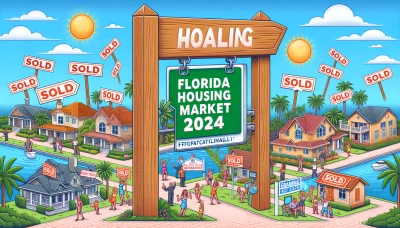Usa home loans Quiz
Test Your Knowledge
Question of
Understanding USA Home Loans
Types of Home Loans
- Conventional Loans
- Government-Insured Loans
Eligibility Criteria for Borrowers
- Credit Score Requirements
- Income and Employment Verification
The Home Loan Application Process
Preparing Your Application
- Gathering Necessary Documents
- Understanding the Application Form
What Happens After You Apply?
- Loan Processing Steps
- Timeline for Approval
Interest Rates and Terms
Fixed vs. Adjustable Rates
Pros and Cons of Fixed Rates
- Pros:
- Predictability in payments over the life of the loan.
- Stability in budgeting as the interest rate does not change.
- Protection against rising interest rates in the future.
- Cons:
- Typically starts with a higher interest rate than adjustable rates.
- Less flexibility to benefit from falling interest rates, unless refinanced.
Pros and Cons of Adjustable Rates
- Pros:
- Usually offers a lower initial interest rate than fixed rates.
- Potential for interest rates and payments to decrease over time.
- Cons:
- Uncertainty in future payment amounts as rates adjust.
- Risk of increasing interest rates and payments, making budgeting difficult.
Understanding Loan Terms
Loan Amortization Explained
Loan amortization refers to the process of paying off a loan with regular payments over a specified period. These payments cover both the interest and the principal amount of the loan. Initially, a larger portion of each payment is applied to the interest, but as the loan balance decreases, more of the payment goes toward reducing the principal.
The Impact of Loan Term on Payments
The term of a loan significantly affects the size of the monthly payments and the total interest paid over the life of the loan. Shorter terms result in higher monthly payments but lower total interest costs. Conversely, longer terms lower monthly payments but increase the total interest paid.
Down Payments and Mortgage Insurance
Saving for a Down Payment
Strategies to Save Money
When planning to buy a home, saving for a down payment is a crucial first step. It involves setting aside a portion of your income regularly, cutting unnecessary expenses, and possibly exploring additional income sources. Creating a budget focused on savings goals can help streamline this process.
Down Payment Assistance Programs
Various programs are available to help potential homeowners with their down payments. These programs often target first-time buyers and may offer grants or low-interest loans to help cover down payment costs. Eligibility requirements vary, so it's important to research and find a program that fits your needs.
The Role of Mortgage Insurance
Private Mortgage Insurance (PMI)
Private Mortgage Insurance is a type of insurance that lenders require from homeowners who obtain a mortgage with a down payment less than 20% of the home's purchase price. PMI protects the lender in case the homeowner fails to repay the loan. While it adds to the monthly mortgage payment, it enables buyers to purchase a home sooner by putting down a smaller down payment.
Government Mortgage Insurance Options
For those who qualify, government-insured loans can offer an alternative to conventional loans. These include FHA loans, which are backed by the Federal Housing Administration, VA loans, guaranteed by the Department of Veterans Affairs for veterans and active military members, and USDA loans for rural homebuyers. Each of these options may require a form of mortgage insurance but typically allows for a smaller down payment than conventional loans.
Property Appraisal and Inspection
The Appraisal Process
What Appraisers Look For
Appraisers assess a property's value based on various factors, including its condition, size, location, and comparable sales in the area. They examine both the interior and exterior of the property, noting any upgrades or features that may affect its value.
How Appraisals Affect Loan Amounts
The appraisal value of a property directly influences the loan amount a lender is willing to offer. If the appraisal comes in lower than the purchase price, the buyer may need to cover the difference or renegotiate the sale price. Conversely, a higher appraisal value can provide more borrowing flexibility.
Home Inspection Checklist
Structural and Mechanical Components
A thorough home inspection includes evaluating the property's foundation, roof, electrical systems, plumbing, heating, and cooling systems. Inspectors look for signs of damage or wear and assess the overall condition of these critical components.
Identifying Potential Issues
During an inspection, potential issues such as water damage, mold, pest infestations, and safety hazards are identified. These findings can influence negotiations, as buyers may request repairs or adjustments to the sale price based on the inspector's report.
Closing on a Home Loan
Understanding Closing Costs
Closing costs are the various fees and charges involved in the process of finalizing a mortgage. They can include loan origination fees, appraisal fees, title searches, title insurance, surveys, taxes, and credit report charges.
Itemized List of Fees and Charges
An itemized list of fees and charges will be provided to you before the closing. This list includes, but is not limited to, the loan origination fee, appraisal fee, credit report fee, lender's and owner's title insurance, and property taxes.
Ways to Reduce Closing Costs
- Negotiate with the seller to pay some of the closing costs.
- Shop around and compare prices for certain services, such as home inspections and title searches.
- Ask your lender for a no-closing-costs mortgage, where costs are either added to the loan balance or covered by a higher interest rate.
The Final Walkthrough and Settlement
Preparing for the Final Walkthrough
The final walkthrough of the property is an important step before closing the deal. It's your last chance to ensure that all agreed-upon repairs have been made and that the house is in the condition you expect. Make a checklist of items to inspect, including the function of appliances, the condition of surfaces, and the operation of windows and doors.
What to Expect at Settlement
At settlement, also known as closing, you will sign all of the paperwork required to complete the purchase, including your loan documents. It's important to read and understand each document you sign. You will also pay your closing costs and escrow items, such as homeowner's insurance, property taxes, and lender's fees. Once all the paperwork is signed and the fees are paid, you will receive the keys to your new home.
Refinancing and Loan Modification
When to Consider Refinancing
- Benefits of Refinancing Your Mortgage : Refinancing your mortgage can lead to lower monthly payments, reduced interest rates, and the ability to switch from an adjustable-rate mortgage to a fixed-rate mortgage.
- Evaluating Break-Even Points : It's essential to calculate the break-even point to determine when the savings from refinancing will cover the costs involved.
Loan Modification Options
- Types of Loan Modifications : Loan modifications can include reducing the interest rate, extending the loan term, or converting from a variable interest rate to a fixed interest rate.
- Qualifying for a Loan Modification : Eligibility for a loan modification typically requires proving financial hardship and demonstrating that you can meet the terms of the modified loan.












